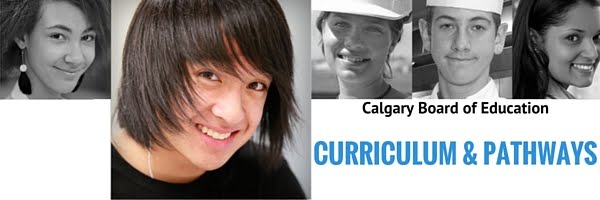We are challenging CBE schools to
participate in the Hour of Code to
celebrate Computer Science Week December 7 – 13. This challenge asks students
to spend one hour over the course of the week learning how to code. It is for
all students, of all ages, in any discipline. Computer programming and coding
is becoming an increasingly
important skill for learners and job seekers to know.
If you accept the challenge, here’s how to do it:
step 1
| sign up
Visit the website https://hourofcode.com/ca to sign up your
school.
step 2
| plan logistics
First, watch this “How To Run an Hour of Code” video. This
activity can be done as a whole school, in select classrooms, or by select
students. Decide if you want this to be a whole-school event, or if it will
take place in certain classrooms or clubs.
step 3
| plan technology
Ensure that all students participating have
a way to access technology (a tablet, computer, or other mobile device will
work) for one hour a week to participate in the Hour of Code. You can even
participate without access to technology with activities teaching the basics of
computer science without the use of any technology.
step 4
| prepare your educators
It’s okay if you and your
students are brand new to coding. The Hour of Code uses tutorials that students can progress through
at their own pace. The tutorials use various different programming languages to
take students through the process of creating code. It is recommended that
teachers take the time beforehand to go through the tutorial they select for
their students so they can help troubleshoot during the event. Another helpful
resource is this Slideshow sharing best
practices from educators.
step 5
| promote
Get kids, parents, and community excited
about the Hour of Code! Send e-mails to
parents! Put up posters
around the school! Show inspirational videos!
step 6
| celebrate
Celebrate your students’ accomplishment by
giving them a sticker,
certificate, or by simply acknowledging
their hard work. Share their Hour of Code throughout the world with the hashtag
#hourofcode or throughout the CBE with the hashtag #cbehourofcode (making sure
you are in accordance with the CBE’s Web
2.0 guidelines). Make this learning visible!
Support is available to help you and your
school take on this challenge.
1.
The Hour of Code website includes everything
you need to get started.
2.
CBE’s Learning will be offering
a webinar
to help you get ready, outline resources available to you, and answer your
questions on Thursday, November 19th from 4 – 5pm. Please sign up
for this webinar
through EAMS.
3.
CBE’s Learning specialists are
available to help you troubleshoot any issues you run into during the week of
December 7 – 11th. Please contact them at:
Matt Armstrong, mgarmstrong@cbe.ab.ca
Tracy Dalton, tadalton@cbe.ab.ca
Erin Quinn, elquinn@cbe.ab.ca
Tracy Rand, tmrand@cbe.ab.ca
Christos Sagriotis, chsagriotis@cbe.ab.ca
Matt Armstrong, mgarmstrong@cbe.ab.ca
Tracy Dalton, tadalton@cbe.ab.ca
Erin Quinn, elquinn@cbe.ab.ca
Tracy Rand, tmrand@cbe.ab.ca
Christos Sagriotis, chsagriotis@cbe.ab.ca











